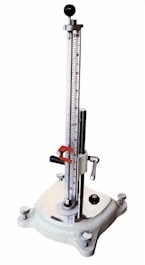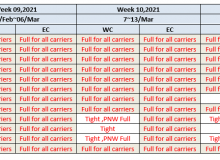Rubber Engineering: Resilience & Hysteresis
Definitions
Resilience is the percent of energy required for a deformed pieces of rubber to rebound back to its original shape after a deformation.
Hysteresis is the percent of energy loss per each deformation. Hysteresis results from friction happening inside the rubber which creates heat build-up. The heat build-up in the rubber is measured as the temperature increases from hysteresis.
To determine resilience, there are a number of test methods ranging from: Low Speed Stress-Strain, Impact Testing, Free Vibration, and Forced Vibration methods.
Low Speed Stress-Strain Test
The low speed stress-strain loop test involves loading then unloading the specimen while the rubber goes through big deformation (tension, compression, or shear) in slow strain. This test is not usually used for measuring hysteresis.

Impact Test
The most common method for measuring the resilience of rubber is by impact rebound testing. This test involves dropping a piece of metal from a predefined height onto a fixed rubber specimen. The height of the metal’s rebound is then measured with a resiliometer. The impact test, however, cannot be used in place of a vibration test.
Free Vibration Test
A popular instrument for measuring rubber’s vibratory resilience by using the free vibration technique is the Yerzley Oscillograph. With the Yerzley Oscillograph, an unbalanced horizontally aligned lever is used to hit the rubber specimen. A sine wave resulting from the motion is then traced on a chart. This instrument is popular for being able to produce precise and reliable data. It performs faster deformation than a stress-strain loop test but slower than impact testing. One caveat of the free vibration test is that the frequency used does not occur in the same magnitude as many of the applications involving vibration. Additionally, this test can only be used for softer rubbers (Durometer 90 Shore A or below).
Forced Vibration Test
Forced vibration test methods can be used to measure the resilience of rubber, although they are most often used to determine the heat build-up of rubber. As rubber heats up, its resilience also increases. Instruments called flexometers are used to compare the specimen’s composition with another which has known performance information obtained by real use.
One might assume that a rubber compound with high hysteresis would be undesirable, but this is not always true. In applications such as vibration damping, compounds with low resilience would be desired for their damping effect. This is because damping is a product of hysteresis. High hysteresis in low resilience rubber would have excessive heat build-up. In a case of high hysteresis, a more high resilience compound should be mixed.
The hysteresis of a specimen found under non-resonant forced vibration is actually closer to its requirements under real service than is resilience. The resilience and compressive properties of the rubber determine the amount of its temperature increase at specific amplitudes and also its relative vibrational energy. This vibrational energy then translates into heat, which can be seen proportionally in the modulus.
Learn More about ASTM Flexometer Testing
Have a question? Please fill out the form below to receive information regarding your inquiry. You can also give us a call at (626) 965-9966.
Error: Contact form not found.























